Air of Authority - A History of RAF Organisation
 Formed at Wyton on 19 April 1916 as reconnaissance unit from a nucleus supplied
by No 2 Reserve Squadron. Equipped with Nieuport two-seaters, it moved
over to the Western Front in October undertaking the usual run of artillery
spotting and photographic reconnaissance sorties.
Formed at Wyton on 19 April 1916 as reconnaissance unit from a nucleus supplied
by No 2 Reserve Squadron. Equipped with Nieuport two-seaters, it moved
over to the Western Front in October undertaking the usual run of artillery
spotting and photographic reconnaissance sorties.
However, in April 1917 it began a new role when it re-equipped with Sopwith Pups scouts (fighters). A short return to the UK for air defence duties in July was prompted by a heavy air raid on London, but the lack of further similar raids led to its return to France in August. In November 1917 Camels replaced the Pups and ground attack was added to its duties and gradually these became more numerous, especially during the German offensive of March 1918 and through to the end of the war. Following the end of the war, the squadron returned to Rendcombe in February 1919 as a cadre, where it disbanded on 31December 1919.
The squadron was reformed on 3 September 1936 by raising 'B' Flight of No 17 Squadron to squadron status. Equipped with Gauntlets, it was based at Kenley, but in November 1937 it moved to Digby in Lincolnshire, where in February 1939 it re-equipped with Hurricanes. Following coastal patrols along the East Coast for the first few months of the war, it was despatched to Norway aboard HMS Glorious on 14 May 1940. When the landing ground was found unsuitable it returned by was sent back on the 26 May, eventually settling at Bardufoss. When it was decided to evacuate the forces in Norway, 46 were instructed to destroy its aircraft and return by sea, but the OC, Sqn Ldr K B B Cross, decided to attempt to save his aircraft by landing them on HMS Glorious. He made the first landing on the carrier, followed by the rest of the squadron, but as the carrier returned to the UK it was attacked and sunk by the Scharnhorst. From the entire ship's complement and No 46 Squadron, only 46 survived and the only two pilots were Sqn Ldr Cross and his flight commander, Flt Lt 'Pat' Jameson.
However, the squadron quickly reformed at Digby and in September it moved south to join the Battle of Britain, remaining there until December 1940 when it returned to Digby. Early 1941 saw it moved into Church Fenton but in May the squadron was sent to the Middle East. The ground crews arrived in Egypt to find no aircraft and the pilots in Malta, so they acted as a Maintenance Unit until May 1942. The pilots in the meantime were absorbed by No 261 Squadron on Malta so for almost a year the squadron existed but in a non-operational role.
In May 1942, the squadron arrived at Edku where it took over the Beaufighters of No 89 Squadron and began operating in the night fighter role. From August 1943 intruder missions against targets on Greek islands began and it operated detachments in Libya, Palestine and Cyprus as well as its main base in Egypt. Mosquitoes replaced the Beaufighters in July 1944 but in December the squadron returned to Stoney Cross in the UK, where in January 1945 it reformed with Stirlings in the Transport role.
Trooping flights to and from India now became the order of the day and continued after the war, with Dakotas replacing the Stirlings in February 1946. From Stoney Cross it moved to Manston in October 1946, Abingdon in December 1946 and finally Oakington in November 1947, where it remained until disbandment. During the Berlin Airlift of 1948-1949, it operated from Wunstorf, Lubeck and Fassberg, but not long after the lifting of the blockade, the squadron disbanded on 20 February 1950.
It reformed in the night fighter role on 15 August 1954 at Odiham, equipped with Meteor NF Mk 12s. These were replaced by Javelin FAW Mk 1s in March 1956, which in their turn were replaced by FAW Mk 2 in Aug 1957 and these were supplemented by FAW Mk 6s in May 1958, both type being operated until the squadron disbanded at Waterbeach on 30 Jun 1961.
Its final incarnation, so far, began on 1 December 1966 when the squadron reformed at Abingdon with Andovers in the tactical transport role. The author well remembers a 2 hour night flight in one of these from Summer Camp at RAF Machrihanish in the summer of 1972 during an ATC Summer Camp at the station. Having moved to Thorney Island in September 1970, the squadron disbanded there on 31 Aug 1975.
| Standards | Battle Honours* |
| Award
of Standard originally announced on 11 Jun 1968, effective from 1 Apr 1968
but presented:-
? |
Western Front, 1916-18: Messines, 1917: Cambrai, 1917: Home Defence, 1917: Somme, 1918: Hindenburg Line: Norway, 1940: Battle of Britain, 1940: Home Defence, 1940-41: Fortress Europe, 1941:Malta, 1941-42: El Alamein: Egypt & Libya, 1942-43: Mediterranean 1942-43: South-East Europe, 1944: |
Squadron Codes used: -
| RJ | Apr 1939 - Sep 1939 |
| PO | Sep 1939 - Jun 1941 |
| XK | Jan 1945 - Feb 1950 |
|
46 Sqn aircrew, RAF Odiham, May 1955. Dennis Southgate, F/L Jimmy (Paddy) Speers, John Tritton, Red Rhodes, Oscar Wilde, Ted Wright, Ken Whitworth, Pat Street, Wg Cdr Birchfield, Dave Collins, Eddie Scott, Howard Fitzer, Jake Kemp, Dickie Dawes. Photo courtesy - Shirley Speers |
[Aircraft & Markings | Personnel, aircraft and locations | Commanding Officers]
No 46 Squadron Association: - Secretary: Group Captain Dougie Barr, Orchard House, Cuxham, Watlington, Oxfordshire, OX49 5NH: tel 01491 614204 : email Dougiebarr@hotmail.com
Steve Robson's 46 Squadron website
 Formed
at Beverley in East Yorkshire on 1 March 1916, by September it was on its way to
Salonika in Greece. Operating a variety of aircraft types it supported
Allied forces in Macedonia by providing both reconnaissance, bombing and fighter
support. In April 1918 the fighter flight was transferred to become the
basis of No 150 Squadron but the squadron maintained its other duties until the
end of the war.
Formed
at Beverley in East Yorkshire on 1 March 1916, by September it was on its way to
Salonika in Greece. Operating a variety of aircraft types it supported
Allied forces in Macedonia by providing both reconnaissance, bombing and fighter
support. In April 1918 the fighter flight was transferred to become the
basis of No 150 Squadron but the squadron maintained its other duties until the
end of the war.
However, the fighting for No 47 would not end there as in April 1919 the squadron was sent to Southern Russia to support the White Russians against the Bolsheviks, being disbanded on 7 October 1919 by being renamed 'A' Squadron, RAF Mission. The squadron reformed on 1 February 1920 when No 206 Squadron at Helwan was renumbered. Equipped with DH9 and later DH9A's, it immediately sent a detachment to Khartoum in the Sudan, with the rest of the squadron joining it in 1927.
Fairey IIIFs began to replace the DH9As in December 1927 and these in turn were replaced by Gordons in 1933, Vincents being also used from 1936, No 47 providing the sole air support for British forces in the Sudan. In 1939 the squadron received Vickers Wellesleys, although some Vincents were retained into 1940. Immediately on the outbreak of war with Italy, the squadron began undertaking bombing operations against Italian forces in Ethiopia and Eritrea continuing these until May 1941, following the Italian surrender. The squadron moved to the Middle East in December 1941 and began anti-submarine patrols in April 1942, with Beauforts beginning to arrive in July, although the last Wellesley was not retired until Mar 1943.
With Beauforts, the squadron began anti-shipping strikes along the North African coast from October 1942. These where continued with Beaufighters from June 1943 although the area of operation soon moved to the coasts of Italy, Sicily and Sardinia and from October 1943 it moved to El Adem in Libya for operations in and around the Aegean. However, in March 1944, the squadron was moved to India and in October began converting to the Mosquito. Problems were immediately experienced with these aircraft as the high humidity began to delaminate their plywood structure and Beaufighters were taken back on strength in November. Having solved the problems with the Mosquito, the squadron was able to finally convert to the type in February 1945 and these were used for fighter-bomber and ground attack operations until the end of the war. The end of the war in the Far East was not the end of operations for No 47, who in November 1945, were sent to Java to carry out missions against nationalist guerrillas, but on 21 March 1946 the squadron disbanded at Butterworth.
However, it was not long before No 47 was revived, when on 1 September No 644 Squadron at Qastina was renumbered. Flying Halifax A Mk 7s and 9s, it returned to the UK at the end of September for the first time since forming in 1916. Based at Fairford, it carried out exercises with airborne forces until moving to Dishforth in September 1948, where it became the first unit to operate the Handley Page Hastings, which it began using on the Berlin Airlift as soon as it had worked up on the type.
The squadron became the first operator of another type when it received Blackburn Beverleys at Abingdon in March 1956, the aircraft being built near and named after the very town where the squadron had been formed in 1916. The squadron disbanded on 31 October 1967, but four months later on 25 February 1968 it was reformed at Fairford to operate the Lockheed Hercules, moving to Lyneham in September 1972. The squadron is still current today and still operates the Hercules, having also operated the C Mk 3 version from March 1980. On 1 July 2011, together with the rest of the Hercules fleet the squadron moved to a new base at RAF Brize Norton. With the retirement of the Hercules the squadron disbanded on 30 June 2023.
| Standards | Battle Honours* |
| Award of Standard originally announced on 7 Sep 1943,
effective from 1 Apr 1943 but
presented:- lst - 25 March 1955 2nd - 3 May 1984 HRH The Princess Anne. 3rd - 8 Jun 2006 HRH The Princess Royal |
Macedonia, 1916-1918:
East Africa, 1940-1941: Egypt & Libya, 1942: Mediterranean, 1942-1943:
Burma, 1945:
Iraq 2003:
Iraq 2003-2011: Libya 2011:
South Atlantic, 1982: Gulf, 1991 |
Squadron Codes used: -
| EW | Allocated Apr 1939 - Sep 1939 |
| KU | Sep 1939 - Sep 1942, Feb 1945 - Mar 1946 |
 |
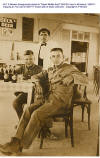 |
 |
 |
 |
 |
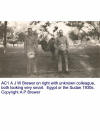 |
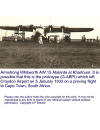 |
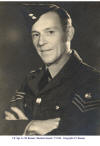 |
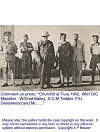 |
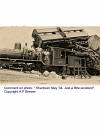 |
 |
 |
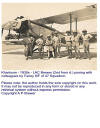 |
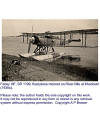 |
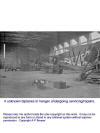 Fairey Flycatchers |
 This is a Farman 190 and, yes, Dorothy Selfridge was the daughter of the shop guy, but at the time she was known as the Vicomtesse de Sibour and was a feature of the contemporary aviation scene. Dont know the identity of the machine but it was almost certainly French-registered and probably chartered from a French airline (possibly one of those serving the African colonies) (C G Jefford) |
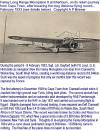 Fairey Long Range Monoplane |
 Gordon K2634 written off after coming adrift from its moorings & capsizing, Khartoum 28 August 1934 (C G Jefford) |
 This is a Klemm L-32. German-built, but no idea who owned/operated it. Only two were UK-registered one by an Aussie serving in the RAF could it have been his? Just a surmise not a fact and no reason to suppose even that it was a British-owned aeroplane. The Klemm series was very popular and they sold well, although the L-32 was a relatively unusual model. There was a British-built adaptation the British-Klemm (later British Aircraft) Eagle but this isnt one the undercart is wrong (C G Jefford) |
 |
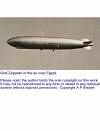 |
 |
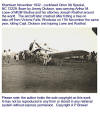 |
| The above photographs were supplied by A P Brewer from his father's (A J W Brewer) collection and include shots from a variety of locations but predominately from his time in the Sudan with No 47 Sqn. | ||
Crash of Hasting TG611 - 16 Jul 1949
[Aircraft & Markings | Personnel, aircraft and locations | Commanding Officers]
 Formed
at Netheravon on 15 April 1916, it worked up on BE12s but when it moved to
France in March 1917, it was as the first squadron to be equipped with the
Bristol Fighter. It soon established itself as one of the premier fighter
squadrons of the RFC and later RAF and pioneered the use of the two-seater
fighter-reconnaissance type, one of its squadron commanders being
Major Keith Park, later to lead No 11 Group
during the Battle of Britain. Following the Armistice the squadron
remained on the continent until moving to India in June 1919, where on 1 April
1920 it was disbanded by being re-numbered as No 5 Squadron.
Formed
at Netheravon on 15 April 1916, it worked up on BE12s but when it moved to
France in March 1917, it was as the first squadron to be equipped with the
Bristol Fighter. It soon established itself as one of the premier fighter
squadrons of the RFC and later RAF and pioneered the use of the two-seater
fighter-reconnaissance type, one of its squadron commanders being
Major Keith Park, later to lead No 11 Group
during the Battle of Britain. Following the Armistice the squadron
remained on the continent until moving to India in June 1919, where on 1 April
1920 it was disbanded by being re-numbered as No 5 Squadron.
When the squadron reformed on 25 November 1935 at Bicester from a nucleus of personnel provided by 'C' Flight of No 101 Squadron. Originally planned as a bomber squadron the unit moved to Manston where it re-allocated to the General Reconnaissance role and became the first unit to receive the Avro Anson in March 1936. However, in the previous January the squadron had taken on a flight of Saro Cloud amphibians from the Calshot and for six months it carried out some early ASR training. As an Anson unit, it took on a training role for No 16 Group and at one point was equipped with eighty aircraft.
It relinquished its training role in September 1938 and reverted to being a GR unit on being posted to Eastchurch and during the early days of the war it flew patrols along the Channel coast particularly against E-boats. In May 1940 the squadron began to receive Beauforts but owing to problems with the engines, the squadron handed over its aircraft to No 217 Squadron at Sat Eval and moved to Hooton Park where it resumed GR patrols over the Irish Sea. Following a detachment being sent to Stornoway, the whole squadron re-located there in July 1941 and it carried out the same duties as before over the North Sea and along the Norwegian coast. At this time the squadron was re-equipping with the Hudsons, which it was to fly, in various forms until early 1944. In October 1941 it moved to Skitten, then to Wick in in January 1942, Sumburgh in September 1942 and then Gosport in November in order to take part in the Allied landing in north Africa.
In December 1942, following the Torch landings in North Africa, No 48 transferred to Gibraltar, where it conducted anti-submarine and anti-shipping patrols over the approaches to and the western end of the Mediterranean. However, in February 1944 with need for such patrols having diminished greatly, the squadron was returned to the UK and transferred to transport Command.
Re-equipping with Dakotas, the squadron worked up in its new role and was able to deploy 30 aircraft on the night of D-Day to drop parachute troops behind German lines. During the Arnhem operation it towed 49 gliders during the first two days and then became involved in re-supply drops, losing 33% of its strength. Its next major operation was Operation Varsity, the crossing of the Rhine in March 1945, after which the squadron was transferred to India for operations against the Japanese. However, following the Japanese surrender, it was no longer needed and consequently disbanded on 16 January 1946.
The squadron quickly reformed on 15 February 1946 when No 215 Squadron at Seletar was re-numbered. Still in the transport role it remained equipped with Dakotas until May 1951 when these were replaced by Valettas, during this period it was heavily involved with Operation Firedog against communist terrorists. Towards the end of Firedog, the squadron re-equipped with the Hastings, which it operated until disbanding on3 March 1967. The squadron reformed again on 1 October 1967 as a Hercules transport unit at Changi, but when Britain withdrew from its bases 'East of Suez' it returned to Lyneham to join the rest of the Hercules force, where it disbanded on 7 January 1976.
| Standards | Battle Honours* |
| Award
of Standard
originally announced on 15 Oct 1957, effective from 1 Apr 1957 but presented:-
? |
Western Front, 1917-18: Arras: Channel & North Sea, 1939-40: Dunkirk: Atlantic, 1941-42: Mediterranean, 1943: Arnhem: Rhine: |
Squadron Codes used: -
| ZW | Allocated Apr 1939 - Sep 1939 |
| OY | Sep 1939 - Dec 1942 |
| I2 | Feb 1944 - Jan 1946 |
[Aircraft & Markings | Personnel, aircraft and locations | Commanding Officers]
 |
Formed on 15 April 1916 at Dover, it operated as a training unit equipped with BE2Cs and RE7s until it received some DH4s in April 1917. It continued in the training role until November when it became fully equipped with DH4s and moved to France. It undertook daylight bombing missions and reconnaissance sorties until April 1918, when it re-equipped with DH9s and recommenced operations with these until the end of the war. After the war it joined the Army of Occupation until disbanding at Bickendorf on 18 July 1919. The squadron reformed at Bircham Newton on 10 February 1936 from a nucleus provided by 'C' Flight of No 18 Squadron. Initially equipped with Hinds, the squadron became the first unit to receive Hampdens in September 1938. Early operations in WW2 consisted of minelaying, reconnaissance and leaflet dropping but following the German offensive in May 1940 it began bombing raids against German targets. Operations with Hampdens continued apace until April 1942, when the squadron re-equipped with the Manchester. However, by this time the failings of the Manchester were becoming obvious and in July they were replaced with Lancasters. The continued to operate for the rest of WW2 as part of Bomber Command's main Force and was retained as part of the post-war bomber force. From 1 February 1949 the squadron number was linked with that of No 102 Squadron and the following October, it received Lincolns. These were taken to Kenya for operations against the Mau Mau between November 1953 and February 1954. The squadron disbanded at Upwood on 1 August 1955. The squadron's final incarnation began on 1 May 1956 when it reformed at Wittering as part of the new V-Force, equipped with Valiants. It took part in Operation Grapple, Britain's nuclear test program, from Christmas Island and one of its aircraft dropped Britain's first hydrogen bomb. When metal fatigue was found in the wing spars of the Valiants, it spelled the end of the aircraft's RAF career and as a result No 49 disbanded at Marham on 1 May 1965. |
| Standards | Battle Honours* |
| ? |
Western Front, 1917-18: Cambrai, 1917: Somme, 1918: Channel & North Sea, 1939-40: France & Low Countries, 1940: Invasion Ports, 1940: German Ports 1940 -45: Ruhr, 1940 - 45: Fortress Europe, 1940 -44: Berlin, 1943-44: Italy, 1943-44: Biscay Ports, 1943: Normandy, 1944: France & Germany, 1944-45: Walcheren: Rhine: |
Squadron Codes used: -
| XU | Apr 1939 - Sep 1939 |
| EA | Sep 1939 - Apr 1951 |
[Aircraft & Markings | Personnel, aircraft and locations | Commanding Officers]
No 49 Squadron Association website: - http://homepages.which.net/~dc.boughton/4t9sa01.htm
 Formed
at Dover on 15 May 1916, it was destined to operate in the home defence role
from Kent for the whole of its WW1 career. Equipped with a range of types,
such as BE2s of various marks, BE12s, RE8, FK8s and Pups. However, in
February 1918 it fully re-equipped with Camels and used these to attack German
bombers based in Belgium, it disbanded on 13 June 1919.
Formed
at Dover on 15 May 1916, it was destined to operate in the home defence role
from Kent for the whole of its WW1 career. Equipped with a range of types,
such as BE2s of various marks, BE12s, RE8, FK8s and Pups. However, in
February 1918 it fully re-equipped with Camels and used these to attack German
bombers based in Belgium, it disbanded on 13 June 1919.
The squadron reformed in the bomber role at Waddington on 3 May 1937. Equipped with Hinds, it eventually received new equipment in the form of Hampdens in December 1938, the Hinds having gone by the end of January 1939. It began bombing raids against German targets in March 1940.
Manchesters replaced the Hampdens in April 1942 but these were short-lived as Lancasters began to arrive in May and the Manchesters had gone by June. Suitably equipped the squadron resumed operations and continued to operate as part of Bomber Command's Main Force for the remainder of the war. Retained as part of the post-war Bomber Command, the squadron re-equipped with Lincolns in July 1946 but disbanded at Waddington on 31 January 1951. From 1 February 1949 to its disbandment the squadron was linked to No 103 Squadron.
Reformed at Binbrook on 15 August 1952, the squadron was now flying Canberra B Mk 2s in the light bomber role but just over seven years later, on 1 October 1959, the squadron disbanded once again, by which time it was located at Upwood. From its re-formation until 30 November 1954, No 50 Squadron resumed its link with the then disbanded No 103 Squadron. It became linked with another disbanded unit, No 40 Squadron, on 1 February 1957 retaining this link until disbandment.
It reformed for the last time, so far, on 1 August 1961 at Waddington as part of the V-Force, equipped with Vulcans. Initially operating the Mk 1, B Mk 2s began to arrive in December 1965 and by November 1966, had fully supplanted the early models. It continued to operate the aircraft, changing to the low level role when the nuclear deterrent was transferred to the Royal Navy, until 31 March 1984 when it disbanded. From June 1982, it had become the only operator of the specially developed Vulcan B Mk 2(K) tanker aircraft and as a result became the last unit to fly the Vulcan operationally.
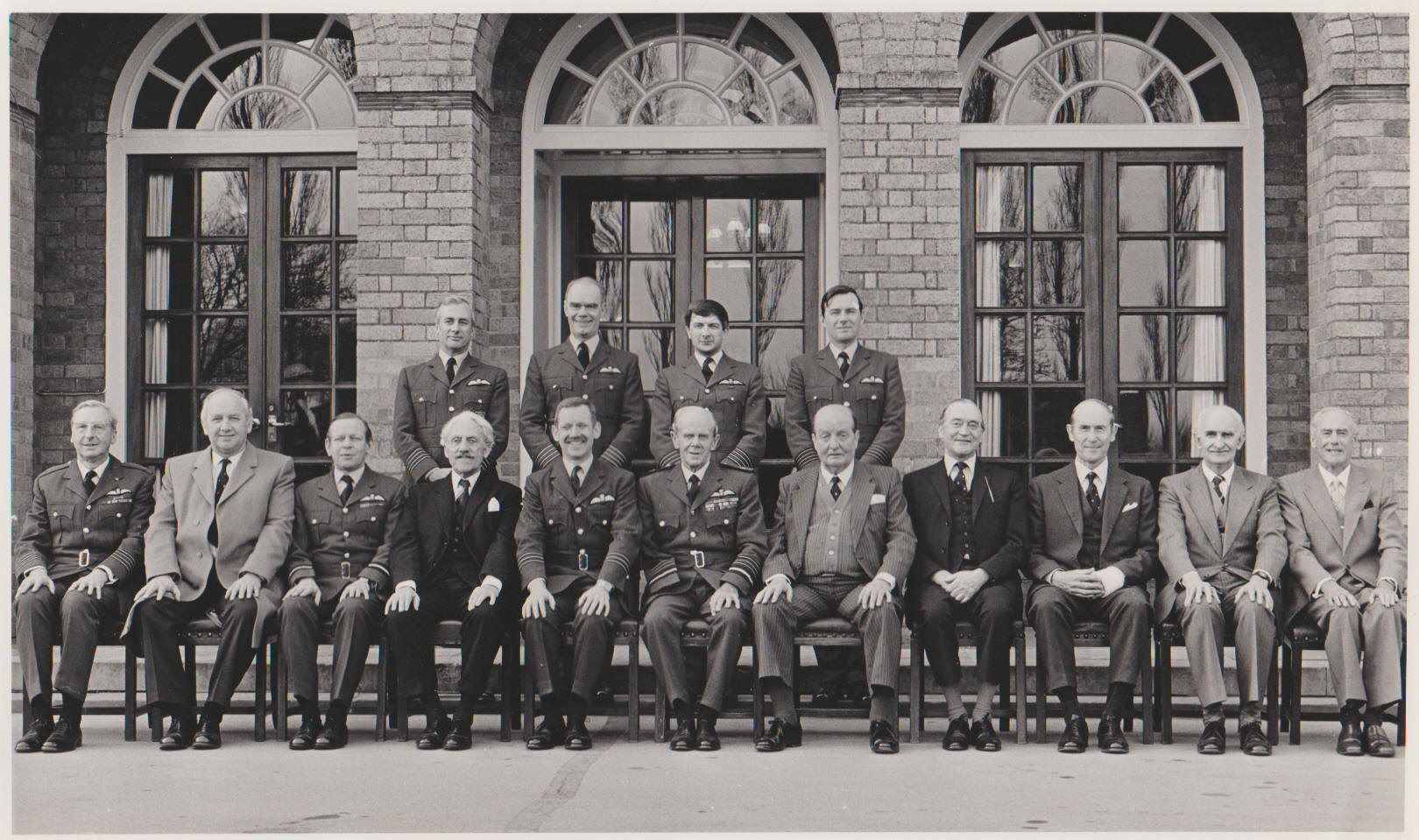 |
|
(Standing) Gp Capt Parkes (33); Gp Capt Ward (34); Gp Capt Baldwin [later AVM] (35); Gp Capt Garden [later AM] (36) (Seated) Gp Capt Lowe (32); Wg Cdr Bradley (30); Air Cdre Smeaton (31); Wg Cdr Flint (18); Wg Cdr Lumb [later A/Cdre](37); ACM Sir Gus Walker (11); ACM Sir Anthony Heward (16); Gp Capt Landon (26); Gp Capt Frogley (17); Gp Capt Pembridge (29); Believed to be Gp Capt Primavesi (27) but not confirmed Ex Squadron Commanders at the squadron disbandment - 1984.(Photo courtesy Richard Jones) |
| Standards | Battle Honours* |
| Standard
originally announced on 26 Nov 1963, effective from 1 Apr 1963 but presented:-
? |
Home Defence, 1916-18: Channel & North Sea, 1939-43: Norway 1940: Baltic, Invasion Ports, 1940: 1940-43: France & Low Countries, 1940: Biscay Ports, 1940-44: German Ports, 1940-45: Ruhr, 1940-45: Berlin, 1940-44: Fortress Europe, 1940-44: Normandy, 1944: France & Germany, 1944-45: Walcheren: Rhine: |
Squadron Codes used: -
| QX | Dec 1938 - Sep 1939 |
| VN | Sep 1939 - Jan 1951 |
[Aircraft & Markings | Personnel, aircraft and locations | Commanding Officers]
*Honours in Black are those the squadron has a been granted the right to emblazon on the Squadron Standard, but does not do so.
Honours in Red are those actually emblazoned on the Squadron Standard
Honours in Blue are those the squadron has not been granted the right to emblazon on the Squadron Standard
Squadron badges on this page are courtesy of Dave Clifford
© Crown Copyright is reproduced with the permission of the Directorate of Intellectual Property Rights
This entry was last updated on 12/05/25©
![]() Organisational
Index
Organisational
Index ![]()